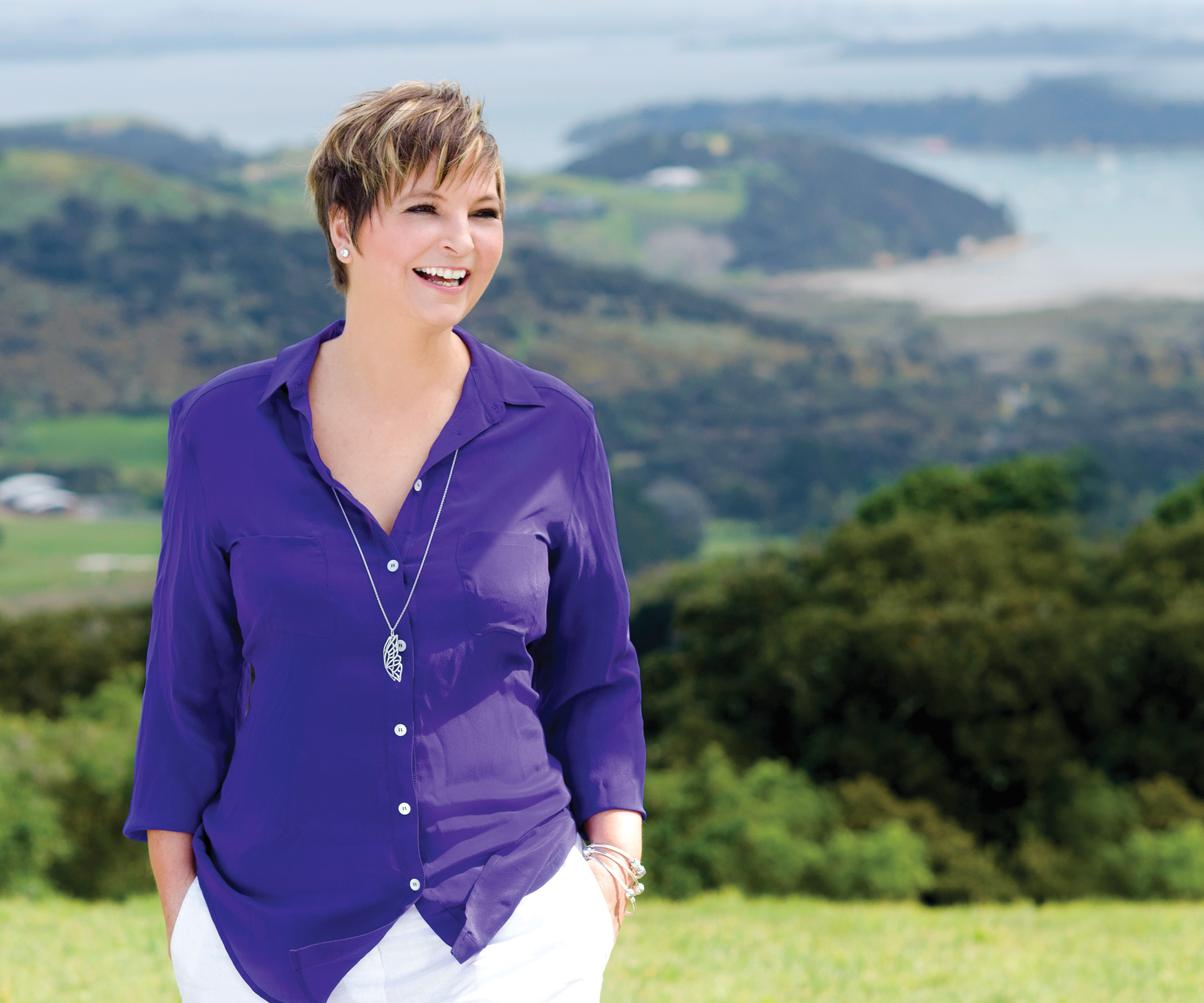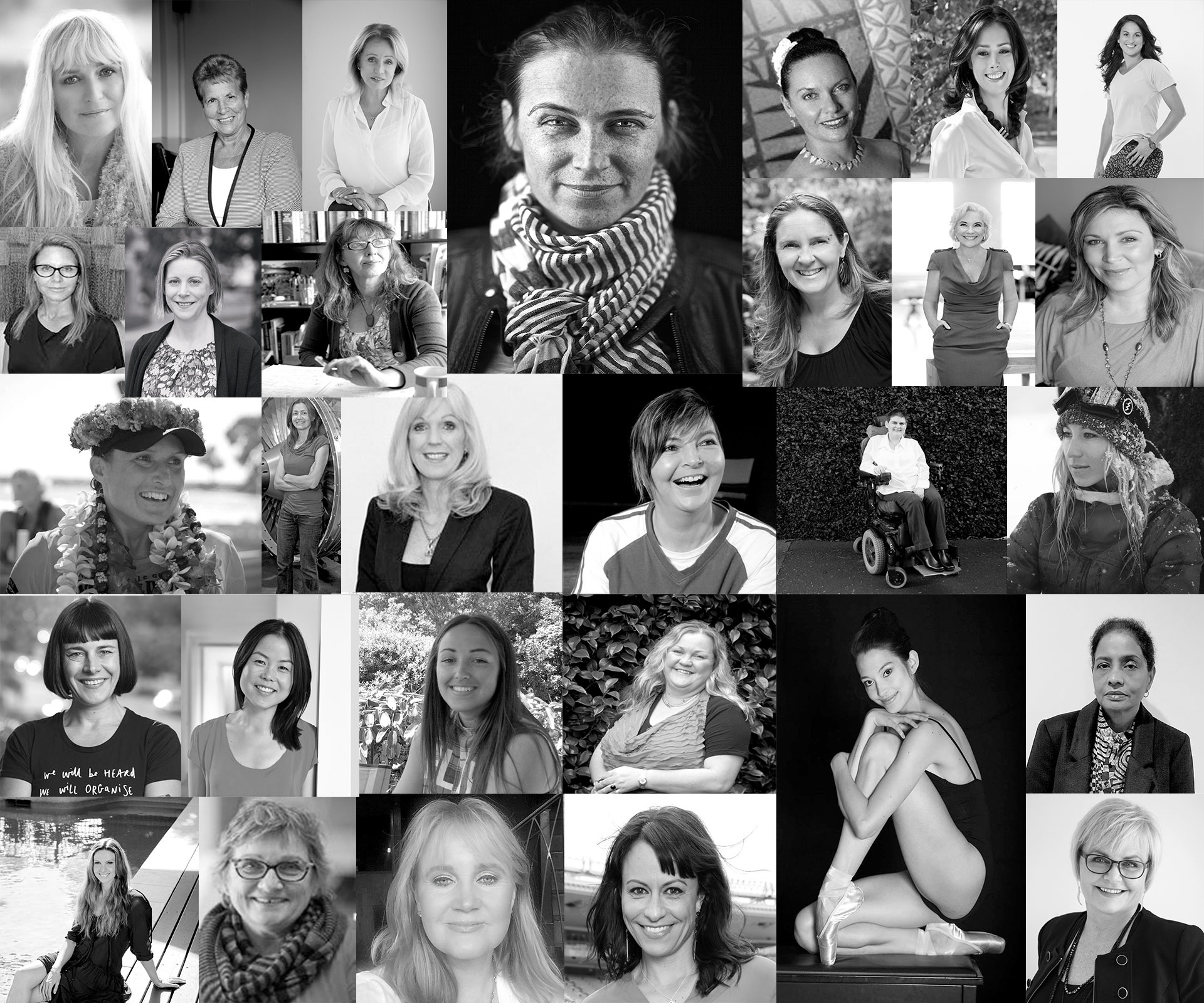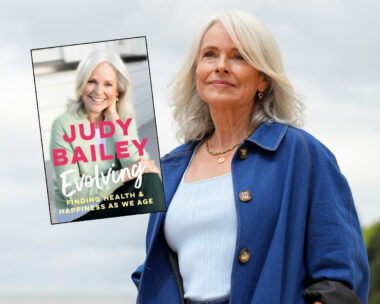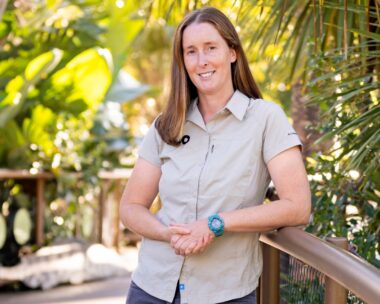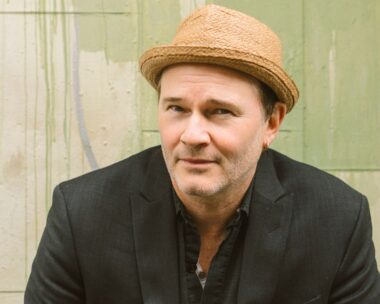What does it take to change the world? An idea, a plan, and a whole lot of passion.
Every year, we go through thousands of entries from spectacular Kiwi women who are changing a community, a country or the world!
We reveal our six winners and the stories behind their success.
Billie Jordan: Supreme winner and Arts & Culture
With no experience in either dance or working with the elderly, Billie Jordan decided to set up The Hip Op-eration Crew, officially recognised as the world’s oldest dance crew – and in turn created a global movement to break down the stigma of ageing and help give seniors a new lease of life. It’s thanks to Jordan’s enthusiasm and dedication to leading this revolution that has seen the rights to her life story sold to Hollywood and the Hip Op-eration Crew has become an international sensation.
With a background in public relations, Jordan had moved to Christchurch for a fresh start when the devastating 2011 earthquake hit. Suffering from post-traumatic stress, she headed north to Waiheke and found herself isolated in a new community, where she reached out to the local elderly.
She needed friends, they needed a project, so she decided to create the world’s oldest flash mob. It was a runaway success, so Jordan then went on to create The Hip Op-eration Crew.
She had never taught hip hop before and the ages in her crew ranged from late 60s to early 90s. But that wasn’t going to stop anyone.
“I didn’t mark their progress by how good their dancing was getting, I marked it by how much their confidence was improving,” Jordan says. “People would say, ‘Oh, it doesn’t matter if they don’t make it to the world champs, as long as they’re getting out of the house.’ And I thought, ‘You wouldn’t say that to someone training to be an All Black, would you?'”
Jordan is now expanding her Hip Op-eration Dance Academy internationally, so that other ageing communities can join this dance revolution. But hip hop is just the vehicle, she believes. The real message that Hip Op-eration is sending is that there’s no age limit on achieving goals or stepping outside of your comfort zone.
“I don’t have a background in old people, or dancing, or raising money. You don’t need anything to make a difference in someone’s life; you don’t need resources or sponsors. You just need to care.”

Trina Tamati: Sports
As the saying goes, ‘You can’t be what you can’t see’. The world of New Zealand sport, once you get to a certain level of management, is almost overwhelmingly run by white, middle-class men. And then, in the most blokey of boys clubs, running the NRL Nines, is Trina Tamati. A Māori woman, with a child, quietly changing the face of rugby league in New Zealand – and having a damn good time doing it.
“I’m still often the only woman in the room. Across cricket, rugby and league in this country, I’m one of very few female senior managers. And I’m the only Māori female senior executive. So we’re very under-represented.”
Tamati describes her job as Tournament CEO “ridiculously cool”, and she and her nearly all-female team are already full steam ahead planning 2017’s event.
Coming from a complicated background, where she ran away from home at age 16, Tamati has worked very hard to get where she is today. She’s now working hard to help young girls experiencing what she had escaped.
She has since become an ambassador for the Dream Academy and speaks to teenage girls from low-decile schools across Auckland. She’s also taken on a patron role for the NZ Defence Force’s military-style boot camp for at-risk youths.
“There’s a certain level of grit that keeps you going and going. Don’t get me wrong, there have been meltdowns along the way, but there’s a bit of steel inside you that makes you get up the next day and realise quitting isn’t an option. I’m here because I deserve to be here, and for me it’s become ‘Don’t give up, because there are so many women out there who need your story, who need to see you in this role.'”
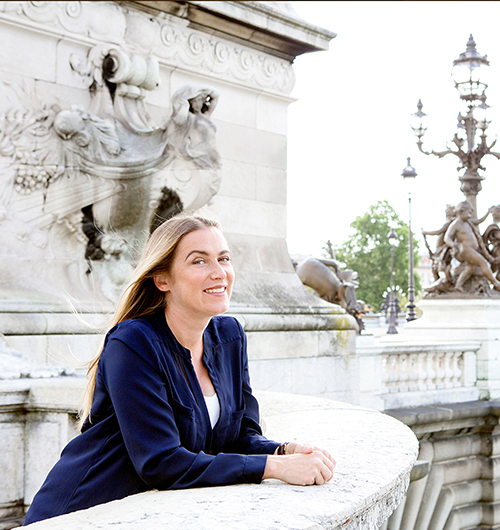
Victoria Ransom: Business
One afternoon in 2011, Facebook’s Sheryl Sandberg welcomed a handful of top Silicon Valley entrepreneurs to her office to meet Oprah Winfrey, who wanted advice on launching her TV network. One was Victoria Ransom, co-founder/CEO of Wildfire Interactive, a social-media-marketing software company.
“Oprah was really engaging,” she says, “and afterwards sent us champagne.” Ransom and husband Alain Chuard, Wildfire’s co-founder, saved that bubbly for a special occasion: it arrived when Google bought Wildfire in 2012 for US$450 million.
By then, Wildfire was one of the two biggest players in the social-media marketing industry, with 400 employees, eight offices worldwide and 30,000 paying customers. Instead of hiring programmers, companies used the Wildfire software application to manage their presence on social media sites, from running marketing campaigns to analysing their audience.
After three years at Google, the couple left last year for time out with daughter Elle, now two, and have just spent four months travelling around Europe. They’re now back in Palo Alto, California, preparing to welcome their second child in November.
Ransom, who once spent five weeks with a remote Amazonian tribe, is as down-to-earth as it gets. It’s easy to forget she was one of 10 immigrant entrepreneurs presented with Champions of Change awards at the White House in 2013 and has been named one of Fortune’s most powerful female entrepreneurs.
With very few Kiwi women leading technology businesses, what are her secrets to success?
“Drive, hard work, self-belief. I’m not afraid to do things differently. And I keep my Kiwi values and family values in mind.”
She’s now mentoring former employees and start-up founders, particularly women and New Zealanders. She speaks at business and networking events and sits on the boards of organisations she’s passionate about: Pure Advantage (promoting green economic growth for New Zealand), foreign-policy think-tank the Carnegie Endowment for International Peace, and (from early 2017) Global Citizen Year, a non-profit that runs gap-year programmes worldwide.
Ransom is at a crossroads.
“As a parent, you’re hyper-aware of your responsibility for the world. I want to start something mission-based, so I’m reading about world problems and technological change to work out where I can have an impact.”
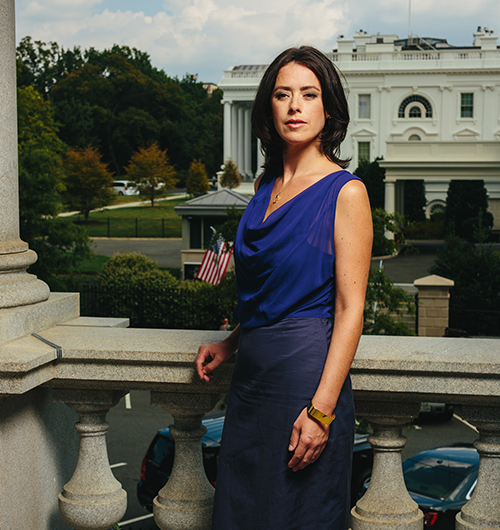
Dale Nirvani Pfeifer: Community
Her chats with Barack Obama and her rapid rise from academia to business and philanthropy make Dale Nirvani Pfeifer intimidating on paper. But in person, the 39-year-old founder of GoodWorld, a software company that enables instant charitable donations via social media, is warm and laid-back, with the rolling Rs of New Zealand’s deep south.
Her two-year-old “baby”, GoodWorld is all about changing how we give – and harnessing the power of social media as a force for human connection and altruism. Every year, Americans donate US$360 billion, and Washington DC-based GoodWorld is now the country’s number-one resource for social-media donations.
So far, more than US$1.75 million (NZ$2.39 million) has been donated to GoodWorld’s 1800 US-based non-profits, including Save The Children, Oxfam and Greenpeace, with the donors (26,000) and donations (50,000) growing up to 40 per cent each month.
Named DC’s Best Technology Startup and one of the world’s 50 Most Innovative Companies, GoodWorld’s been called “a big opportunity for philanthropy” by none other than Barack Obama. Pfeifer met him at an entrepreneurs’ event in July 2014.
“I said, ‘Hi Mr President, I’m Dale Pfeifer from New Zealand.’ He joked, ‘What are you doing here?’ He was calm and present, asked about GoodWorld and really got it.”
Pfeifer worked on GoodWorld outside her day job for two-and-a-half years.
“I’d wake up at 4, 5am. The hardest thing was the loneliness.”
The day after the launch however, she received more than 200 emails from non-profits.
“I was giddy. But because I’m a wild optimist and believed in my analysis, I was always convinced this could be big.”
Forty leading non-profits were on board before she sought venture capital.
GoodWorld takes a small percentage of donations; payments processor Stripe also takes a small fee. Pfeifer, who gives away a third of her salary, says a for-profit model means GoodWorld can do more good more quickly, attracting high-calibre investors and being accountable to a board.
Her 11 staff includes three Kiwis, and she’d love to launch GoodWorld here one day – and in developing countries. Her wildest dream?
“A gift built into every transaction. So when I buy, say, this coffee, I also buy, say, a bottle of water for someone in Tanzania. Can we create a system that benefits everybody?”
If anyone can help recalibrate capitalism, it’s Pfeifer.

Anne Gaze: Education
The importance of education was drilled into Anne Gaze from a young age. She was raised in a low socio-economic household, and she and her five siblings were brought up by their mother to believe education was the only way for them to change their circumstances.
It’s why she’s such a strong advocate for children in lower-decile schools: “I know how hard it is to graft yourself out of that; you have to have very strong parents and a very strong sense of self-worth.”
When one of her sons was falling behind academically at school, she sent him off to an intensive three-day course in Europe – and it worked: he aced the course. Gaze decided to replicate the international programme here, but with a twist. The tutoring is delivered not by a teacher but by high-performing past students: former duxes, premier scholars.
The programme, called Campus Link, now teaches 30,000 Kiwi students – across all school deciles – every July and October school holidays.
Campus Link aimed to provide an equal playing field for all students sitting those all-important end-of-year exams, so a child in a decile-one school could have the same tools as one in a decile-10 school. Problem solved, right? Not quite. Gaze found she’d have to take things further.
During one of the Campus Link holiday programmes, a tutor told her about some kids in his class who were bright and able to articulate the answers, but when it came to putting them on paper, they were failing. Gaze started looking at how children learn, and realised the problem was widespread.
“There are 140,000 kids in our schools who get out of bed every morning and go to school, and get delivered the curriculum but can’t access it,” she says. “These kids have no tools. If a child doesn’t know how to do maths, giving them more maths is not going to help.”
Gaze started working with the Centre for Brain Research to look at how the brain works, and how they were dealing with children who had suffered head trauma. Isolating the part of the brain that was injured, they exercised it repeatedly until it showed improvement – and believed if you can do that with an injury, you can do the same with a learning difficulty.
Her solution lay in the Feuerstein Method, which looks at improving the brain’s cognitive functions, the foundation for how we learn. Thanks to Gaze, it’s now in 11,000 schools. But she’s not resting until it’s in all of them – she wants the 80,000 teachers in New Zealand to undergo training so that, finally, there is an equal playing field.
“It is my personal mission to make sure there’s a paradigm shift,” she says. “To change the landscape of education in this country, to no longer accept what is unacceptable. All of our population has an equitable right to an education they’re deserving of.”
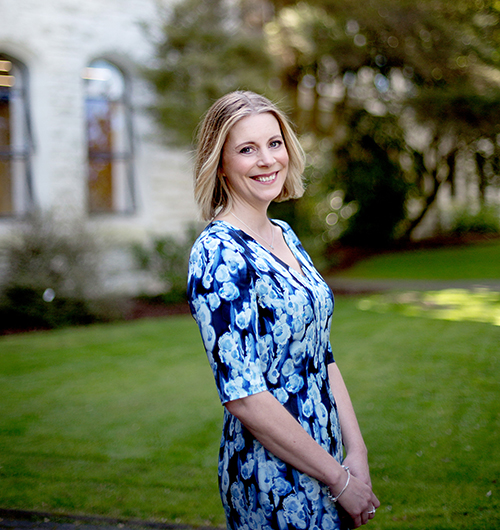
Professor Merryn Gott: Health & Science
How and where would you most like to die? It’s not a comfortable question to ask yourself, but it’s an important one. As Professor Merryn Gott points out: “It’s an issue that ultimately affects us all and we only have one chance to get it right.”
In an ideal world, how we die should be a reflection of our values, our culture, how we lived our lives. But too often, fear gets in the way of those conversations and the way we die is rushed, impersonal, with too much pressure riding on family members.
Gott is an advocate of having those conversations – she’s been having them as part of her job for a long time. The sudden shock of death hit her when Gott was 18 and her godmother was diagnosed with lung cancer and died soon after. Her godmother had no history of smoking, so it was a bolt from the blue, a swift puncture to the bubble of Gott’s “lovely, protected” childhood.
Thanks to that and her hospice volunteering with children suffering from Aids, her interest switched from geography to gerontology, the study of old age. Even then, death was the elephant in the room.
“You still find this at gerontology conferences – no one talks about death or dying. It’s all about successful ageing. I was one of the first people to bring that discourse in and start talking about death and the wider societal issues that affect older people, like being alone and ageism.”
Working at the University of Auckland, Gott is helping to get palliative care embedded in our health system. Representing our bicultural society has also been a focus, as she says the needs of Māori are not necessarily met by Western medicine.
She’s also trying to create a community for carers, noting that they’re often overlooked by medical professionals. She was the second woman – and second social scientist – to win the New Zealand Association of Scientists Research Medal in 2014 and her work in palliative medicine means she leads the field internationally.
If you’ve watched a loved one die, you know there’s a big difference between a good death and a bad one. Thanks to Gott, more New Zealanders will get to experience a good death – and that benefits us all, not least the loved ones left behind.
For more, see the November issue of NEXT.

